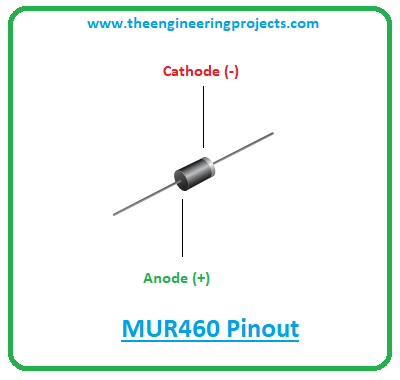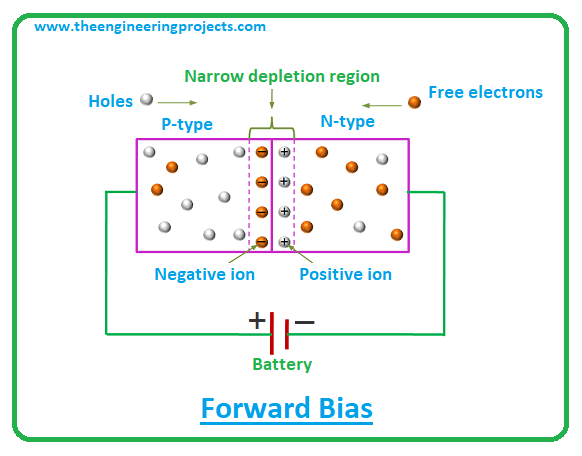 Hi Folks! I welcome you on board. Thank you for clicking this read. In this post today, I’ll detail the Introduction to MUR460.
Hi Folks! I welcome you on board. Thank you for clicking this read. In this post today, I’ll detail the Introduction to MUR460.
The MUR460 is a switch-mode rectifier used in inverters, switching power supplies, and as a freewheeling diode.
Just stay with me for a little while as I’ll be discussing the complete introduction to MUR460 covering pinout, features, working, and applications of this component.
Let’s get started.
Introduction to MUR460
- The MUR460 is a diode used as a rectifier in high frequency and freewheeling applications, in switching mode converters, and as an inverter in telecommunication.
- When this p-n junction diode is used as a rectifier it coverts AC signals to DC signals. The rectifier diode provides an alternating voltage that changes with respect to time.
- The p-n junction diode blocks current in reverse biased condition and allows the current to flow in forward biased condition only. Simply put, the p-n junction diode allows current to flow in one direction only and it blocks the current flowing in the opposite direction.
- MUR460 comes with a working peak reverse voltage and a maximum repetitive peak reverse voltage of 600V. The maximum average forward rectified current is 4A. And the operating junction temperature range is -65 to 175 C.
MUR460 Datasheet
Before you employ this component into your project, just go through the datasheet of the device that details the main characteristics of the component. Click the link below and download the datasheet of the component MUR460.
MUR460 Pinout
The following figure shows the pinout diagram of MUR460.
- This diode rectifier comes with two terminals called anode and cathode.
- The anode side is positive through which current enters the diode and the cathode side is negative through which current leaves the diode and current moves from the anode terminal to the cathode terminal.
MUR460 Working
- The working of this component is simple and straightforward. When the voltage is applied to the rectifier diode in such a way the negative terminal of the battery is attached with the n-type semiconductor and the positive terminal of the battery is connected to the p-type semiconductor material, in this condition the diode is forward biased.
- In this forward biased condition, the free electrons available in the n-type region of the semiconductor experience a repulsive force, and a large number of holes present in the p-type semiconductor also experience a repulsive force.
- In this case, the electrons due to this repulsive force start moving from the n-type region to the p-type region and the holes in the p-type region start moving to the n-type region.
- And the conduction is carried out due to these charge carriers i.e. holes in the p-region and the electrons in the n-region.
- As this conduction is the result of the movement of free majority charge carriers in the diode, the reason the current in the forward biased condition is also called the majority current.
MUR460 Features
The following are the features of this device MUR460.
- Operating Junction Temperature = 175°C
- Reverse Voltage = 600 V
- Available in Tape and Reel
- Carries low leakage current and low forward voltage
- Ultrafast recovery times i.e. 25 ns, 50 ns, and 75 ns
- High-temperature glass passivated junction
MUR460 Applications
- Used in high-frequency rectification
- Used in freewheeling applications
- Employed in switching mode converters
- Incorporated as an inverter in telecommunication
That was all about the Introduction to MUR460. If you’re unsure or have any questions, you can ask me in the comment section below. I’d love to help you the best way I can. Keep your valuable suggestions and feedback coming, they help us generate quality work customized to your exact needs and requirements. Thank you for reading this post.
JLCPCB – Prototype 10 PCBs for $2 (For Any Color)
China’s Largest PCB Prototype Enterprise, 600,000+ Customers & 10,000+ Online Orders Daily
How to Get PCB Cash Coupon from JLCPCB: https://bit.ly/2GMCH9w
The post MUR460 Rectifiers Datasheet, Features, Equivalent and Applications appeared first on The Engineering Projects.


No comments:
Post a Comment